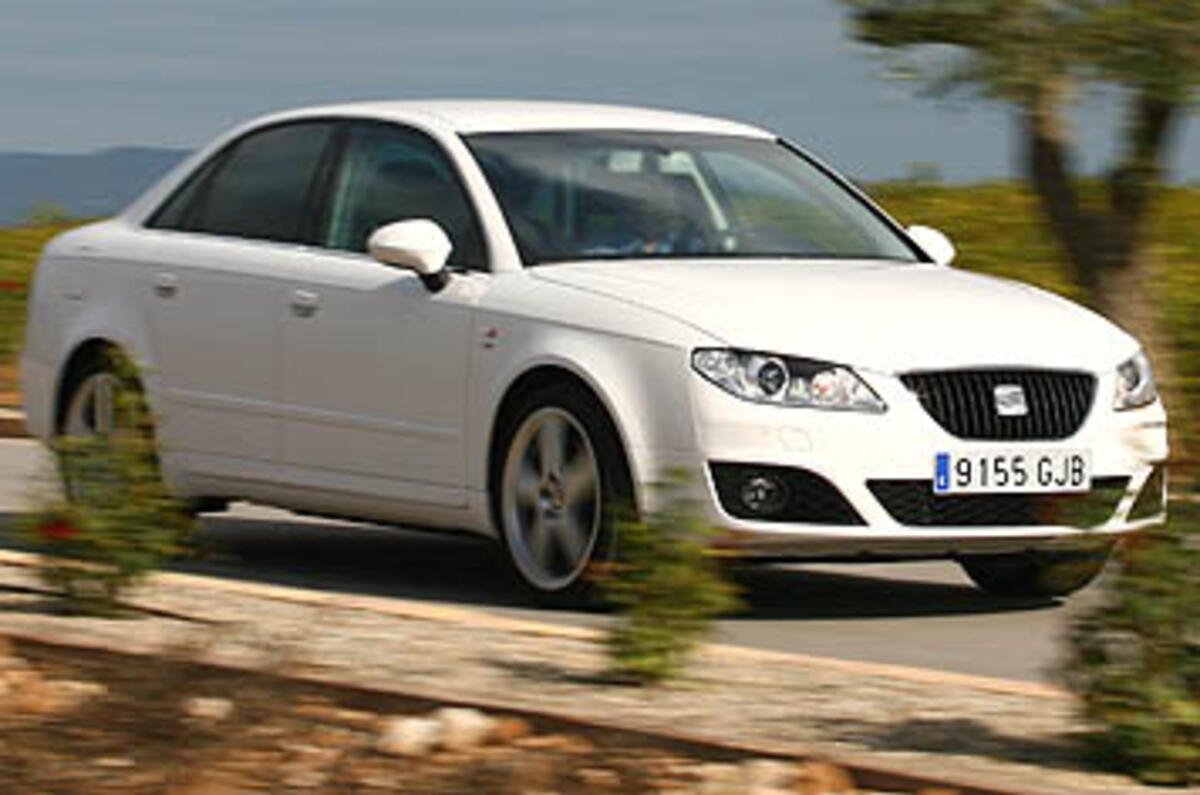What is it?
It’s the new Seat Exeo, which is also the previous-generation Audi A4.
The speed at which the Exeo has been created from the 2004 Audi A4 is reflected in its external make-up - the whole A4 production line was lifted from Germany and re-installed in Spain.
Aside from the new bonnet and boot lid, the front and rear light clusters are new, as are the bumpers and wheel designs.
Inside, it’s pure Audi cabriolet, aside from the steering wheel’s centre boss and the grilles covering the speakers. The bolstered seats get new trim materials, but otherwise, it’s the familiar, beautifully restrained and solidly constructed old-school Audi cabin.
There’s a pretty sophisticated chassis – including four-link front suspension - under the skin. But its main weakness is also the reason why Audi abandoned this chassis: the longitudinally mounted engine is mounted ahead of the front wheels.
The Spanish claim that around 30 percent of the Exeo’s components have been ‘changed or adapted’, including fitting a new-generation common-rail diesel engine in 143 and 170hp forms.
The re-worked suspension (modified springs, dampers and anti-roll bars) comes in both standard and Sport settings and the software for the Servotronic power steering has been re-written.
What’s it like?
It’s a nice place to sit, certainly. And there’s much feel-good factor attached to sitting in a truly premium cockpit.
On the road, and running at no more than a brisk pace, the Exeo does seem to have more spring in its step than its leaden Audi forebear.
Our 170hp diesel was running on ‘comfort’ suspension (which seemed to live up to its billing). In quickish bends, healthy side-forces built up giving the driver something to work against when turning into a corner.
The steering also seemed to have a stronger self-centering, which also helps give the car a more quick-witted feel in bends.
But Seat engineers, like Audi’s, will have struggled to contain the nose-heaviness inherent to the longitudinal engine layout.
In the Sport-suspended 200bhp 2.0 TSI turbo petrol version – and driving more quickly - the car lost composure on long-wave undulations.
In very fast bends, the Exeo Sport could be pointed with reasonable accuracy, but the feel at the wheel rim is rather mushy and indistinct.
However, the new 170hp diesel is also refined and very punchy. Real-world overtaking pace is impressive and this is undoubtedly the choice engine in the range.
And the Exeo’s standard of construction was first-rate. There’s little evidence of cost cutting in the interior materials.
Should I buy one?
With prices set between £17 and £20k, the finalised production Exeo could make a case for itself in a Seat-defined slot between the mainstream Insignia and ‘sub premium’ Passat and Accord.































Join the debate
Add your comment
Re: Seat Exeo 2.0 TDI SE
Yes - this wasn't necessarily a bad idea but they've completely blown it with the pricing IMHO.
Especially when the bigger Skoda Superb, which is a fresh design rather than a cast off, starts at about £14.5K. This would have been a more realistic figure for the Exeo as well.
Re: Seat Exeo 2.0 TDI SE
Hmmm, I see that the prices for the Exeo are £17,740 to £21,340.
What price a year old SE diesel? I'll take it at £8500.
Re: Seat Exeo 2.0 TDI SE
They could have at least given this car less Audi-like alloys - try harder!!!